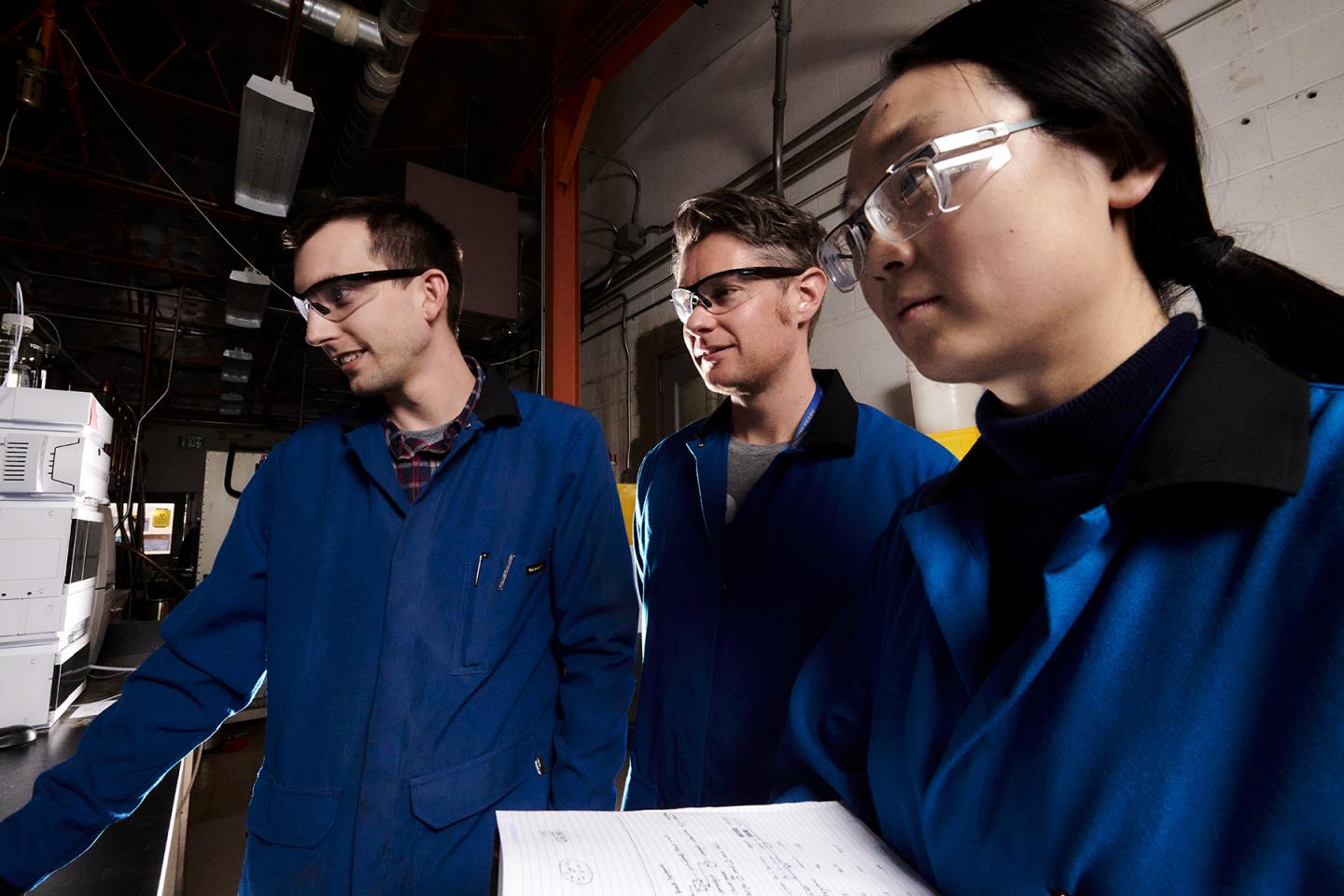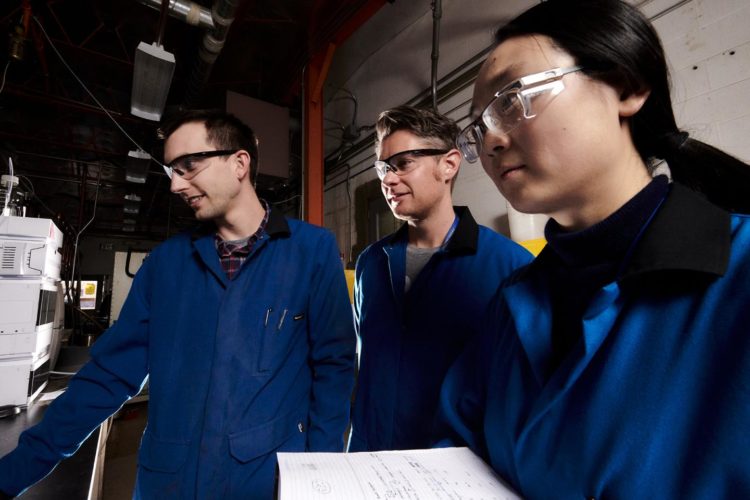New product creates fuel from biomass, while improving engine performance

Credit: Los Alamos National Laboratory
LOS ALAMOS, N.M., January 23, 2020–Take biomass-derived acetone–common nail polish remover–use light to upgrade it to higher-mass hydrocarbons, and, voila, you have a domestically generated product that can be blended with conventional jet fuel to fly while providing environmental benefits, creating domestic jobs, securing the nation’s global leadership in bioenergy technologies, and improving U.S. energy security.
“This process allows us to transform a natural product into a fuel additive, improving the performance of petroleum-based jet fuel,” said Courtney Ford Ryan, a postdoctoral fellow at Los Alamos National Laboratory and lead author of a paper out in preprint form in the journal Sustainable Energy and Fuels.
“We converted bio-derived acetone to isophorone and then used a UV lamp to convert it to a cyclobutane, a type of hydrocarbon with high energy density for fuels applications,” Ryan said.
There are many challenges in using acetone for fuels applications, the paper’s authors note. Its volatility precludes its direct use as a fuel, and it requires chemical upgrading to be suitable for introduction into the fuel supply, as acetone has a nasty habit of dissolving engine parts and O-rings. So by upgrading the initial product to a cyclobutane, a potentially safer and more energy-dense fuel is created, while reducing the hydrogen input required for upgrading a bio-derived feedstock.
“Reducing high-pressure hydrogen treatment in synthesizing renewable fuels is important, because most hydrogen is derived from using steam to reform natural gas, which generates carbon dioxide,” she said. Next, more work is needed to make a catalyst that could do it using sunlight, Ryan noted.
###
Publication: Synthesis of Aviation Fuel from Bio-Derived Isophorone, Sustainable Energy and Fuels (online preprint), authors Courtney Ford Ryan, Cameron M. Moore, Juan H. Leal, Troy A. Semelsberger, Jenny K. Banh, Junqing Zhu, Charles S. McEnally, Lisa D. Pfefferle, and Andrew D. Sutton. DOI: 10.1039/C9SE01014A
Funding: U.S. Department of Energy’s Office of Energy Efficiency & Renewable Energy (EERE) Bioenergy Technologies Office (BETO) through ChemCatBio: Chemical Catalysis for Bioenergy Consortium.
About Los Alamos National Laboratory
Los Alamos National Laboratory, a multidisciplinary research institution engaged in strategic science on behalf of national security, is operated by Triad, a public service oriented, national security science organization equally owned by its three founding members: Battelle Memorial Institute (Battelle), the Texas A&M University System (TAMUS), and the Regents of the University of California (UC) for the Department of Energy’s National Nuclear Security Administration.
Los Alamos enhances national security by ensuring the safety and reliability of the U.S. nuclear stockpile, developing technologies to reduce threats from weapons of mass destruction, and solving problems related to energy, environment, infrastructure, health, and global security concerns.
Media Contact
Nancy Ambrosiano
[email protected]
505-667-0471
Related Journal Article
http://dx.





